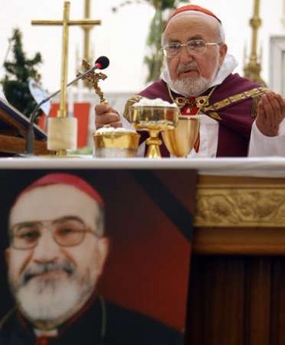
On December 29, the Catholic Church remembers St. Thomas Becket, the other Thomas who was martyred for the Catholic Faith in England by a king named Henry over matters of Church governance.
Thomas was born in London on the 21st of December in either 1117 or 1118 to Gilbert Becket and Matilda Roheise. His parents were buried in Old St. Paul's Cathedral. When Thomas was 10 he learned to read at the Merton Priory in England and then traveled to the Mainland for further studies of canon and civil law in Paris, Bologna, and Auxerre.
After his studies were concluded he returned to England around 1141 where he gained the attention of Theobold, Archbishop of Canterbury, who sent him on several missions to Rome and ordained him a deacon in 1154. Soon after this, he was named Archdeacon of Canterbury. About this same time King Stephen died, leaving Henry the II as the new king. At Archbishop Theobold's urging, King Henry named Thomas the Lord High Chancellor of England. Thomas and King Henry were close friends and both spent a good deal of time “living it up.”
Thomas was so zealous in carrying out his duties as chancellor that many of the English clergy distrusted him. His loyalty to Henry, a Norman, was also seen by some as treachery since Thomas was a Saxon and should have been protecting the Saxons from the reaching of the Norman king.
When Archbishop Theobold died in 1161, King Henry thought that naming Thomas the new Archbishop of Canterbury would solidify his position as sole head of England; something that had long been opposed by Archbishop Theobold.
Thomas warned the King that if he were to become the Archbishop, he would fulfill his duty as zealously for the Church as he had as chancellor for England. The King insisted, even obtaining a dispensation from the Pope for Thomas to hold both positions. In 1162 Thomas was named Archbishop of Canterbury and immediately the conflicts that he had warned King Henry about began.
He resigned as Chancellor, excommunicated one of the nobles, and successfully opposed a new land tax by the king. Within two years, Thomas fled to France in exile after more fighting with the king over the Constitutions of Clarendon which were an attempt by the king to define clearly the various spheres of authority between church and state.
King Louis VII of France welcomed Thomas and let him stay at the Cistercian Abbey of Pontigny for two years until threats by King Henry forced him to move. During this time, Thomas was in constant contact with Pope Alexander III who sympathized but wanted to try a more diplomatic approach to resolving the crisis than Thomas wanted.
In 1166 the pope granted Thomas permission to take what measures he saw fit to try to bring the matter to a close. Thomas immediately excommunicated several of the king's councilors. In 1167 the pope appointed arbiters to try to resolve the authority disputes peacefully, but Thomas refused to compromise. In 1169 Thomas excommunicated two bishops loyal to King Henry. In 1170 King Henry had himself crowned king by the Archbishop of York and the pope threatened to excommunicate all of Britain unless the king agreed to work out a compromise with Thomas.
Thomas returned to England in November of 1170 and immediately declared the Constitutions of Clarendon null and void. Henry, in a rage, said “Who will rid me of this troublesome priest?” or similar words. Four of his knights, Reginald Fitzurse, Hugh de Moreville, William de Tracy, and Richard le Breton, took this as a clear command from the king and murdered Thomas during vespers in Canterbury Cathedral on December 29, 1170.
Thomas Becket was canonized in 1173. On July 12, 1174, in an attempt to calm a revolt, King Henry II did public penance at Thomas' tomb.
In 1538, three years after having St. Thomas More beheaded for opposing the rule of the Catholic Church by the king, King Henry VIII had the shrine of St. Thomas Becket destroyed in an act of vengeance. He also had Thomas' relics destroyed and any mention of his name obliterated.









































